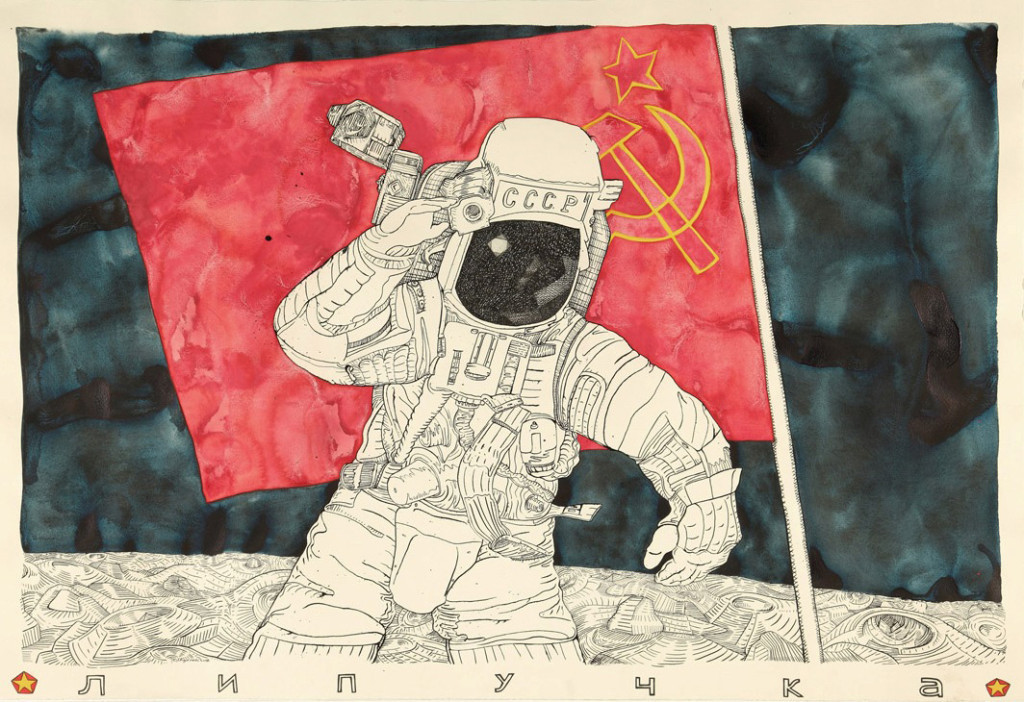Contrast, humour, and self-reflection in the work of artist Tonel
By Sarah Andrews, Rafael Sandoval, Crystal Rivera, Ya Hsuan Wu, and Pei Ying Chou, Contributors
The contemporary art of Cuban artist Tonel, born Antonio Eligio Fernández, reflects current and historical topics in his cartoon and caricature style drawings as well as sculptures made from a variety of forms and materials.
He cleverly addresses main themes around the global economy, neoliberalism, and recent financial crises by relating them to the geography of the body, the humanity, the nation, and even the cosmos.
Tonel plays a lot with contrast in order to shock viewers. In his piece “In the History of Velcro” (2009), he depicts the image of the famous first lunar landing by the Americans with Soviet symbols.
At first glance we might simply perceive this to be an inaccurate account of the event. Some might even feel irritated by his use of an iconic all-American image with the Soviets’ symbols, as this was a proud moment in American and Western history. Others might simply laugh at the occurrence.
But no matter what the reaction, Tonel has got your attention: you are captured by the opposing images, and the visible tension that accentuates this contrast. This not only forces the audience to interpret a larger scheme but it also turns the exaggeration into an absurdity that the audience becomes acutely aware of.
Why is it that we are so easily moved by a “misrepresentation” of the lunar landing? It is almost unrealistic how violently and viscerally we react to history, or art that portrays different ideas than those we have come to understand.
Tonel also expresses his ideas in a humorous, often ironic way. His piece “Lunajod-2” (2009) depicts a comically drawn driverless golf cart over the moon.
Once again, viewers are shocked by two contrasting images that seemingly have nothing to do with each other. But an acute viewer can interpret this as the expansion of capitalism as golf is a sport that only those with a lot of money can afford to participate in. The driverless car makes reference to the supposedly invisible hand that drives the liberal economy.
Yet this is not a welcoming image because we see the golf cart is lost in the middle of a difficult terrain. It is going nowhere because no one is driving it to safe port, just like what was happening during the economic recession in the late 2000s. And even worse, it looks absolutely pointless to take the golf cart anywhere. The task is doomed at its core.
One final trait of Tonel’s work is his use of self-portraits. Most of them are half-naked and presented in vulnerable or uncomfortable positions. This is the case with “The Chair” (1993), a wooden sculpture that shows a man in an upright sitting position vomiting. It becomes evident that the man has been in this uncomfortable position for so long that he has become the chair himself and he is expressing his sickness with vomit.
If this has caught your attention then join us on Wednesday, October 16 at 6:45 p.m. in the Aboriginal Gathering Place for an open talk with the intelligent and witty artist, Tonel.
This article features the individual work of the above contributors, combined into the final piece by professor Ruth Mandujano-Lopez.
